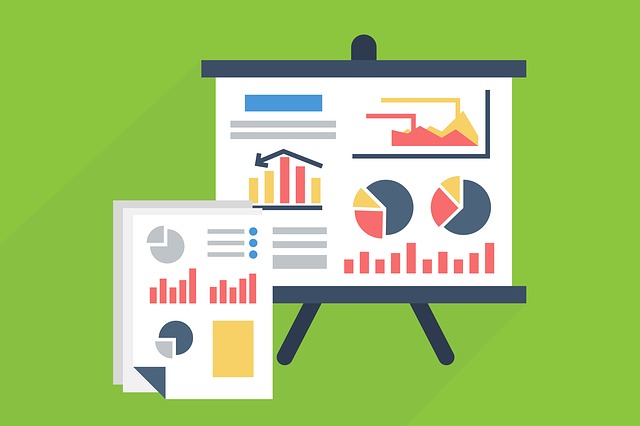Discover the power of email analytics and reporting with these 10 essential metrics you should track.
By measuring and analyzing key data points, you can gain valuable insights into the effectiveness of your email marketing campaigns.
First up is the Open Rate, which reveals how many recipients actually open your emails.
Then, there’s the Click-through Rate, indicating the percentage of people who click on links within your emails.
Conversion Rate measures how successful your emails are at driving desired actions, such as purchases or sign-ups.
Next, keep an eye on the Bounce Rate, which shows the percentage of emails that were undeliverable.
Unsubscribe Rate tells you how many recipients opt out of receiving future emails, helping you gauge the relevancy of your content.
And don’t forget about the Email Sharing/Forwarding Rate, which highlights how often your emails are shared with others.
These metrics provide a comprehensive view of your email campaign’s performance and allow you to make data-driven decisions for future improvements.
So, let’s dive into the world of email analytics and unlock the secrets to maximizing your email marketing success.
Key Takeaways
- Open Rate, Click-through Rate, Conversion Rate, Bounce Rate, Unsubscribe Rate, and Email Sharing/Forwarding Rate are important email analytics and reporting metrics.
- A high open rate indicates compelling subject lines and content, while a low open rate may indicate a lack of resonance with subscribers.
- Monitoring click-through rates helps identify areas for improvement and suggests active engagement and value in content.
- Conversion rate measures the percentage of recipients who take desired actions and maximizing it maximizes the impact of an email campaign.
Open Rate
The open rate, a crucial metric to monitor in email analytics and reporting, offers insights into the effectiveness of your email campaigns. It measures the percentage of recipients who actually open your emails, indicating their level of engagement with your content.
A high open rate suggests that your subject lines and email content are compelling, capturing the attention of your audience. On the other hand, a low open rate may indicate that your emails are not resonating with your subscribers.
To improve your open rate, consider conducting A/B testing to determine which subject lines and email designs generate the most engagement. By tracking your open rate, you can gain valuable insights into the success of your email campaigns and optimize your strategies.
Now, let’s move on to the next important metric: click-through rate.
Click-through Rate
Improve your email campaign by tracking the click-through rate, which acts as a window into your audience’s engagement. The click-through rate (CTR) measures the percentage of email recipients who clicked on a link within your email. It is a vital metric that provides insights into the effectiveness of your email content and the level of interest it generates among your subscribers. A higher CTR indicates that your audience is actively engaging with your emails and finding value in the content you provide. By monitoring your CTR, you can identify areas for improvement and optimize your email campaigns to increase engagement rate and email deliverability. As you transition into the next section about ‘conversion rate,’ you can gain further insights into the effectiveness of your email campaigns in driving desired actions from your audience.
Conversion Rate
Boost your email campaign by measuring the conversion rate, a powerful metric that can ignite a surge of excitement and drive real results from your audience. The conversion rate measures the percentage of recipients who not only open your email but also take the desired action, such as making a purchase or filling out a form.
To improve your email conversion rate, consider implementing A/B testing strategies. This involves creating two versions of your email and testing them with different segments of your audience to see which one performs better.
Additionally, optimize your landing pages to increase email conversion rate. Make sure they’re visually appealing, user-friendly, and have clear calls-to-action.
By focusing on improving your conversion rate, you can maximize the impact of your email campaigns.
Now, let’s dive into the next section about the ‘bounce rate’.
Bounce Rate
Reduce the bounce rate of your email campaign by ensuring that your messages land softly and smoothly in your recipients’ inboxes, like a perfectly executed dive into a calm pool. Bounce rate refers to the percentage of emails that were not successfully delivered to the recipient’s inbox. A high bounce rate can negatively impact your email campaign’s effectiveness and deliverability. To tackle this issue, focus on improving your email list quality by regularly verifying and updating your contacts. Additionally, pay attention to the content and formatting of your emails to avoid triggering spam filters. By reducing your bounce rate, you can increase the chances of your email reaching the intended audience and achieving your campaign goals. Now, let’s move on to the next section where we will discuss the ‘unsubscribe rate’.
Unsubscribe Rate
Keep an eye on the unsubscribe rate to gauge how well your email campaign is resonating with your audience and make any necessary adjustments. Subscriber engagement is crucial for the success of your email marketing efforts, and the unsubscribe rate is a key metric to monitor.
A high unsubscribe rate indicates that your audience is not finding value in your emails or that you may be sending them too frequently. On the other hand, a low unsubscribe rate suggests that your emails are relevant and engaging.
To improve your unsubscribe rate, focus on delivering valuable content, personalizing your emails, and ensuring that your opt-in process is clear and transparent. By optimizing your unsubscribe rate, you can increase subscriber engagement and improve your opt-in rate.
Now, let’s move on to discussing the email sharing/forwarding rate.
Email Sharing/Forwarding Rate
The email sharing/forwarding rate can provide valuable insights into how your audience is engaging with your content. It can help you identify which emails are resonating the most with your subscribers.
This metric measures the percentage of recipients who share or forward your emails to others. A high email sharing/forwarding rate indicates that your content is compelling and resonating with your audience, leading them to share it with others.
It can also extend the reach of your emails beyond your subscriber list, potentially increasing your email engagement rate and expanding your audience. By tracking this metric, you can gain a better understanding of the effectiveness of your email campaigns and make informed decisions about the type of content that resonates best with your subscribers.
Frequently Asked Questions
How can I track the engagement level of my email recipients beyond the metrics mentioned in the article?
To track the engagement level of your email recipients beyond the mentioned metrics, consider looking at the percentage of recipients who click on multiple links within your email. This statistic, known as the click-to-open rate (CTOR), indicates how engaged your audience is with the content. By tracking CTOR, you can determine if your email is successfully capturing the interest of your recipients and driving them to explore further.
Are there any best practices for improving the open rate of my emails?
To improve the open rate of your emails, focus on two key areas: subject lines and audience targeting.
Crafting compelling subject lines that grab attention and create curiosity can entice recipients to open your emails.
Additionally, segmenting your audience and tailoring your content to their specific interests and needs can increase engagement.
By optimizing both subject lines and targeting, you can improve your open rates and ultimately drive better results from your email campaigns.
What are some effective strategies for increasing the click-through rate of my email campaigns?
To increase the click-through rate of your email campaigns, try implementing these effective strategies.
First, personalize your emails by using recipient’s names and segmenting your audience based on their preferences.
Second, create compelling subject lines that grab attention and entice readers to open your emails.
Third, use clear and concise call-to-action buttons that stand out.
Finally, regularly test different email designs, layouts, and content to optimize effectiveness and drive more clicks.
How can I analyze the impact of my email marketing on overall conversion rates?
You want to analyze the impact of your email marketing on overall conversion rates? Well, it’s quite simple, really.
Start by measuring your email campaign success. Look at metrics like open rates, click-through rates, and conversion rates.
Analyzing email marketing effectiveness involves tracking the number of leads generated, the revenue generated from email campaigns, and the overall return on investment.
By examining these metrics, you can gain valuable insights into how your email marketing efforts are impacting your conversion rates.
Are there any tools or software that can help me automate the tracking of these email analytics metrics?
Yes, there are automated tracking tools and email performance software available that can help you streamline the tracking of email analytics metrics. These tools can provide you with real-time data on key metrics such as open rates, click-through rates, bounce rates, and conversions.
They can also generate detailed reports and visualizations to help you analyze the impact of your email marketing efforts on overall conversion rates. Utilizing these tools can save you time and effort in collecting and analyzing email analytics data.
Conclusion
In conclusion, tracking email analytics and reporting metrics is crucial for a successful email marketing campaign. By monitoring metrics such as Open Rate, Click-through Rate, Conversion Rate, Bounce Rate, Unsubscribe Rate, and Email Sharing/Forwarding Rate, you can gain valuable insights into the effectiveness of your campaigns.
These metrics provide data-driven evidence of how your audience is engaging with your emails, allowing you to make informed decisions and optimize your strategies.
Remember, knowledge is power, and by harnessing the power of email analytics, you can unlock the full potential of your email marketing efforts. So, don’t let your data go to waste, embrace it and watch your campaigns soar like a bird in flight.









